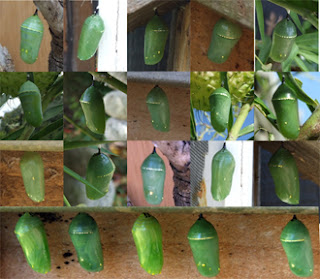Known to live for over a thousand years and grow to over fifty metres tall, the largest kauri are seen by Maori as the lords of New Zealand's northern forests. Yet since 2009 the microscopic water mould Phytophthora agathidicida has been causing kauri dieback at an ever-increasing rate. Surveys in the Waitakeres show that most of the infected areas are within ten metres of walking paths and therefore the mould is being spread by visitors to the lowland forests who fail to thoroughly clean their shoes with the supplied disinfectant spray. In a truly David versus Goliath battle between the miniscule mould and giant trees, introduced species such as possums and pigs are aiding the former by accidentally spreading the minute spores.
Auckland Council reported last winter that the amount of affected kauri has reached 19 percent, meaning a doubling in scale in only five years. Since there is no cure for infected kauri, some scientists are now predicting the extinction of this magnificent tree in the near future. The combination of the pathogen's microscopic size with its rain-based activation after dormancy means there are currently no methods that can prevent the infection from spreading. In a way, the rāhui may just slow down the inevitable. Considering the immense kauri are home to a unique ecosystem of epiphytes, orchids and associated symbiotic organisms, the future flora and fauna of kauri-free forests may well be markedly different from the Waitakeres as they are today.
I've previously discussed the ubiquity of the unsung fungi and how prominent they are even within totally man-made environments. It seems surprising that New Zealand's authorities, so keen to preserve native birds and reptiles, are failing to take any action to at least buy time for the kauri; perhaps they have already deemed extinction as unavoidable and not worth spending public funds on.
The kauri are far from being the only organisms currently threatened by fungi or their kin. Over the past decade more than thirty snake species in the eastern and mid-western United States have started succumbing to what has been termed Snake Fungal Disease. The culprit is thought to be a soil-based fungus called Ophidiomyces ophiodiicola, with a similar organism now also thought to be affecting snakes in the United Kingdom and mainland Europe. Research suggests that up to ninety percent of infected snakes die from the condition, so clearly if humans and their vehicles play unwitting hosts to the microscopic fungal spores, the future for the world's snake population looks depressing. Although many people might not like snakes, ecosystems without them may see an explosion in the numbers of their prey animals, including rodents; to say the least, this would not bode well for crop farmers!
Perhaps the best-known of the global fungal-caused epidemics is the amphibian-decimating Chytridiomycosis, whose affects were initially recognised twenty years ago but may have started much earlier. As its spores can live in water, the responsible Batrachochytrium fungi are ideally situated to infect about one-third of all frog, toad, newt and salamander species. Again, it is thought that man has inadvertently caused the problem, as the African clawed frog Xenopus laevis is an immune carrier of the fungus and has been exported worldwide since the 1930's.
Another contributor may be climate change, as amphibian-rich forests experience temperature variations that are ideal for the chytrid fungi to proliferate in. As a final nail in the coffin - and as with bees and Colony Collapse Disorder - pesticides may play a key role in the epidemic. Agrochemicals are shown to lower the amphibian immune response and so increase their susceptibility to infection. However, the situation isn't completely hopeless: here in New Zealand, researchers at the University of Otago have used chloramphenicol, an antibiotic eye ointment, to cure infected Archey's frogs (Leiopelma archeyi). This species is already critically endangered even without the chytrid epidemic; hopefully, the cure will prove to be the saviour of other amphibian species too. This would be just as well, considering the dangerous side effects found in other treatments such as antifungal drugs and heat therapy (the latter involving temperature-controlled environments that are lethal to the pathogen).
During the past decade, over five million North American bats have been killed by white-nose syndrome, which is caused by the fungus Pseudogymnoascus destructans. Again, humans have inadvertently spread the pathogen, in this case from Eurasia, where the bat species are immune to it, to North America, where they are most definitely susceptible. The bats are only affected during hibernation, which makes treating them difficult, although brief exposure to ultraviolet light has been shown to kill the fungus. This may prove to be a cure to infected colonies, although how the UV could be administered without disturbing the cave-roosting populations will take some figuring out.
It appears then that a combination of manmade causes (international travel, climate change and chemical pollution) is creating a field day for various tiny fungi or fungus-like organisms, at the expense of numerous species of fauna and flora. The culprits are so small and pervasive that there is a little hope of preventing their spread. Therefore if conventional cures cannot be found, the only hope for the likes of the kauri might be the use of genetic engineering to either give the victim resistance or to kill off the pathogen. This science fiction-sounding technology wouldn't be cheap and its knock-on effects unknown – and potentially disastrous. The former technique would presumably not be any use to the existing populations, only to the germ line cells of the next generation. Whatever happens, our short-sighted approach to the environment is certainly starting to have major repercussions. A world without the magnificent kauri, not to mention many amphibian, reptile and mammal species, would be a much poorer one.










